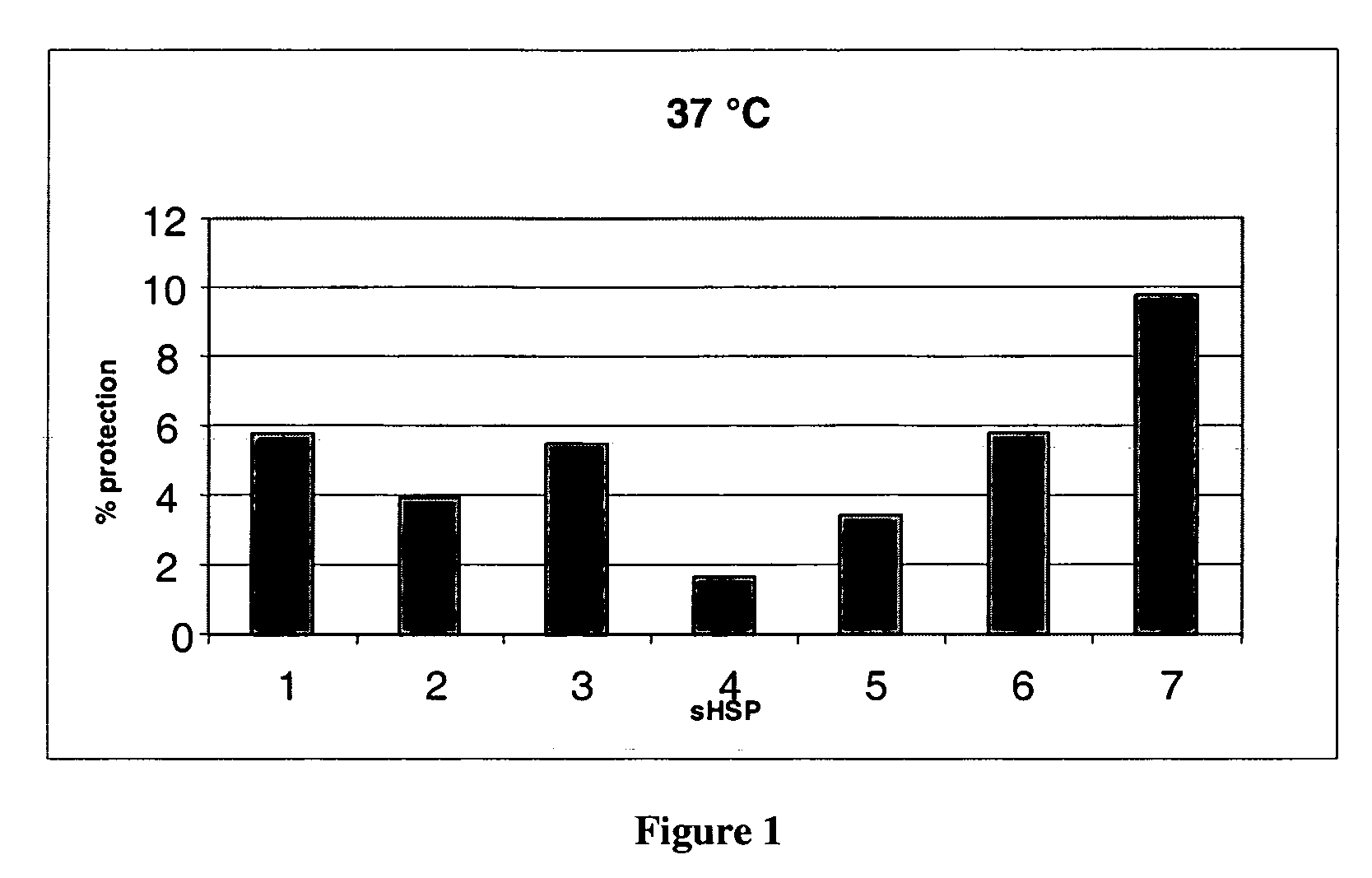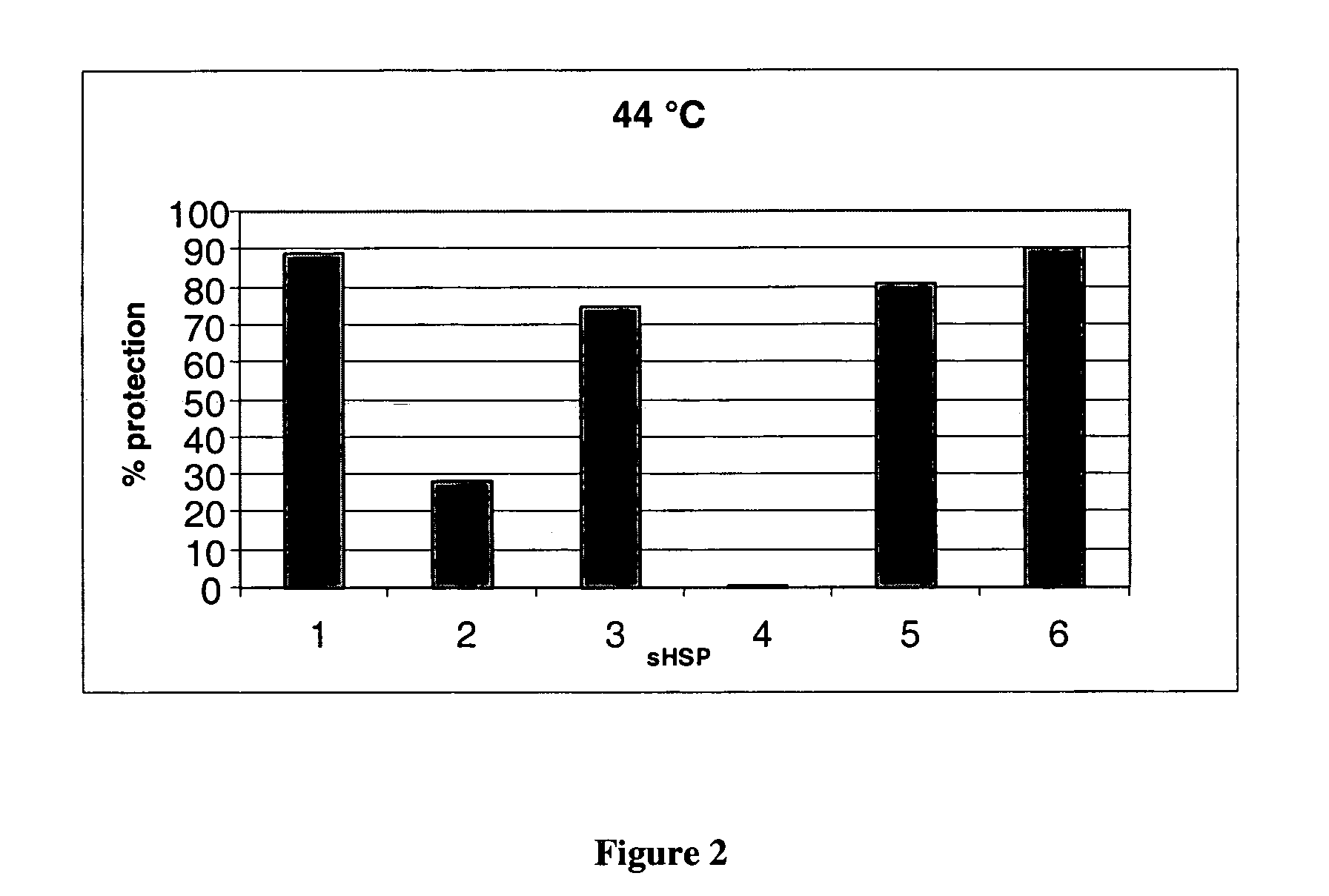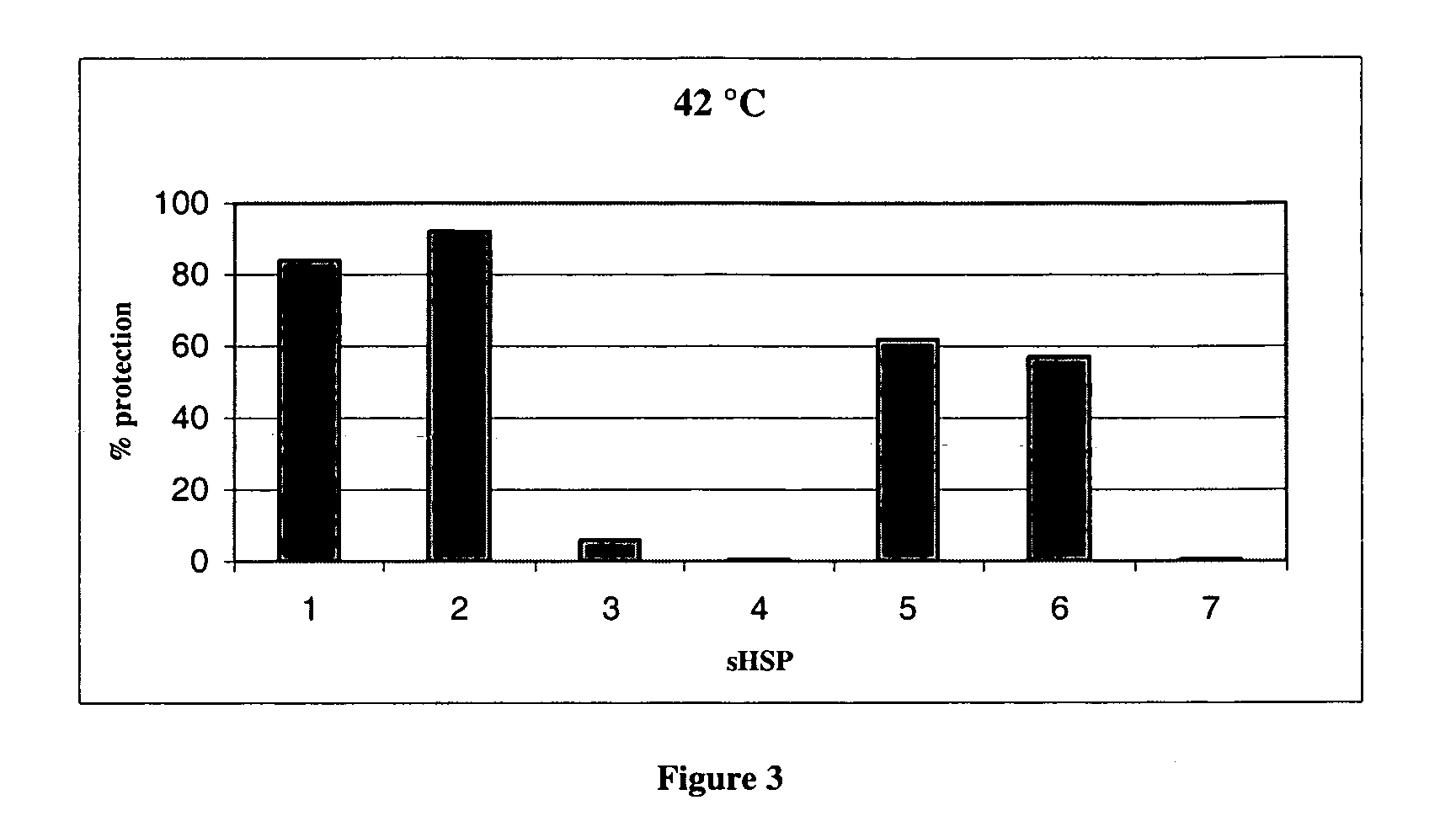Protein stabilization
a protein and stabilization technology, applied in the field of protein chaperones, can solve the problems of not being as good as mkbp itself, putting the whole cell at risk, etc., and achieve the effect of improving activity and reducing activity
- Summary
- Abstract
- Description
- Claims
- Application Information
AI Technical Summary
Benefits of technology
Problems solved by technology
Method used
Image
Examples
example 1
[0085] The protection of the insulin against aggregation by the sHSPs is detailed in FIGS. 1 and 2. Insulin with no addition of sHSP was taken as baseline and protection was calculated relative to this.
[0086] This data shows that different sHSPs have different activities and that activity can be improved by mixing different chaperones, i.e. α-crystallin is better than αA-crystallin or αB-crystallin, αA-crystallin being worse than αB-crystallin. Also some sHSPs have no chaperone activity in this assay, e.g. HSP20. HSP27 and αB-crystallin both showed good chaperone activity and HSP17.5 performed the best. Prior art patent EP0599344A1 suggests the different sHSPs will have comparable activities, but these data do not support this assumption.
[0087] The data presented in FIG. 2 demonstrates that the sHSPs can show temperature variability, e.g. αB-crystallin. HSP25 and HSP27 all improve their relative activity at 44° C. compared to 37° C. These data refute previous claims ...
example 2
[0088] The citrate synthase assay was performed at 42° C. and 50° C. and the results calculated as for the insulin assay. (FIGS. 3 and 4)
[0089] The citrate synthase results also show that sHSPs have different activities. In this assay, at both temperatures, αA-crystallin performed better than αB-crystallin. HSP20 was again inactive. HSP27's activity appeared constant at both 42° C. and 50° C., whereas αB-crystallin was less effective at 50° C. The naturally occurring mixture of αA / αB crystallin (α-crystallin) performed better than the individual proteins at 50° C.
example 3
[0090] The luciferase activity was measured after storage for 1 hour at 37° C. and 7 days at room temperature (FIG. 5). From these studies it is clear that αB-crystalline and HSP17.5 are both proficient in preserving the enzyme activity of luciferase at room temperature. Once again there are differences between the individual chaperones with obvious poor (e.g. αA-crystallin, HSP20) as well as good chaperones. These data show how it is possible to extend the lifetime of the luciferase, which should then open up new applications for luciferase in the biodiagnostic industry. The inherent liability of the enzyme has restricted the application within applied biotechnology and consequently the market is currently limited to research applications. Chaperone addition can now open up new commercial applications of luciferase.
PUM
| Property | Measurement | Unit |
|---|---|---|
| Temperature | aaaaa | aaaaa |
| Temperature | aaaaa | aaaaa |
| Temperature | aaaaa | aaaaa |
Abstract
Description
Claims
Application Information
 Login to View More
Login to View More - R&D
- Intellectual Property
- Life Sciences
- Materials
- Tech Scout
- Unparalleled Data Quality
- Higher Quality Content
- 60% Fewer Hallucinations
Browse by: Latest US Patents, China's latest patents, Technical Efficacy Thesaurus, Application Domain, Technology Topic, Popular Technical Reports.
© 2025 PatSnap. All rights reserved.Legal|Privacy policy|Modern Slavery Act Transparency Statement|Sitemap|About US| Contact US: help@patsnap.com



